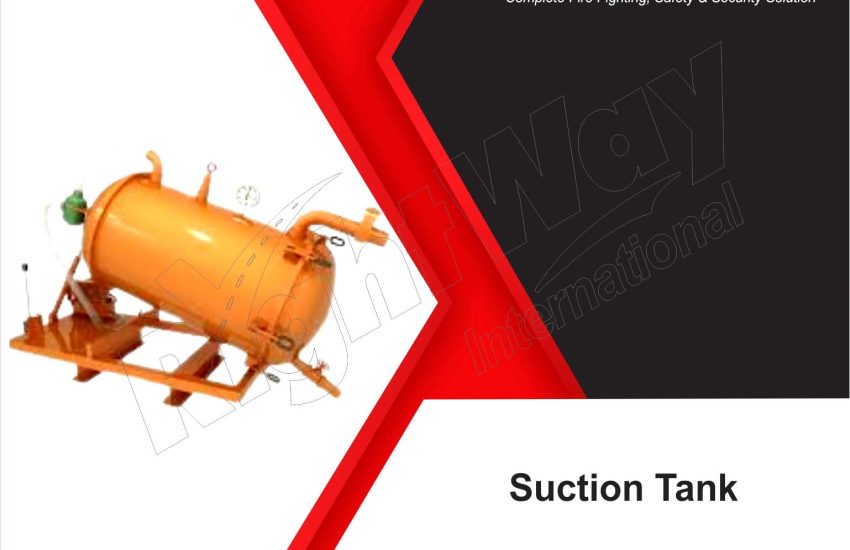Water Suction Tank A water suction tank is a critical component in various water supply systems, ensuring efficient and reliable water intake from sources such as wells, rivers, or storage reservoirs. These tanks play a pivotal role in the functioning of pumps and water distribution systems, allowing for smooth operations across residential, commercial, and industrial applications. In this article, we will delve into the features, benefits, installation, and maintenance of water suction tanks, incorporating essential keywords to optimize for search engines.
What is a Water Suction Tank?
A water suction tank is designed to collect and store water before it is pumped into the main distribution system. Key functions of a water suction tank include:
- Water Collection: Serves as a reservoir for water collected from various sources.
- Pressure Regulation: Helps maintain optimal pressure levels for efficient pumping.
- Sediment Settlement: Allows for the settling of sediment and debris before water enters the pumping system.
Key Features of Water Suction Tanks
When choosing a water suction tank, consider the following essential features:
- Material Composition: Common materials include polyethylene, steel, and fiberglass, ensuring durability and resistance to corrosion.
- Size and Capacity: Available in multiple sizes to accommodate different water demands, from small household tanks to large industrial systems.
- Inlet and Outlet Design: Efficient inlet and outlet configurations facilitate smooth water flow and minimize turbulence.
- Access Points: Built-in access points for easy inspection, cleaning, and maintenance.
Benefits of Using Water Suction Tanks
1. Enhanced Water Supply Reliability
Water suction tanks ensure a continuous and reliable water supply, particularly in areas with fluctuating water levels. This reliability is essential for both residential and industrial users.
2. Improved Pump Efficiency
By maintaining a steady water level, suction tanks help reduce the workload on pumps, leading to increased efficiency and longer equipment lifespan. This can result in significant cost savings over time.
3. Sediment and Debris Control
The design of water suction tanks allows for the settling of sediments and debris, reducing the risk of clogs and damage to pumping systems. This contributes to better water quality and system reliability.
4. Compliance with Water Regulations
Many local and regional regulations mandate the use of suction tanks in water supply systems. Installing a water suction tank can help ensure compliance with these requirements, avoiding potential legal issues.
Installation of Water Suction Tanks
Step 1: Site Assessment
Before installation, conduct a thorough site assessment to determine the optimal location for the tank. Consider factors such as accessibility, proximity to water sources, and drainage.
Step 2: Selecting the Right Tank
Choose a tank that fits your capacity needs and material preferences. Consulting with a professional can help ensure you make the best decision for your specific application.
Step 3: Installation Process
- Excavation: Dig a suitable area for the tank installation, ensuring it is level and stable.
- Foundation Preparation: Create a solid foundation to support the tank’s weight when filled with water.
- Tank Placement: Carefully position the tank in the excavated area.
- Piping Connection: Install the necessary inlet and outlet piping to connect the suction tank to the water source and distribution system.
- Testing: Conduct thorough testing to ensure the system operates efficiently before putting it into use.
Maintenance of Water Suction Tanks
Regular maintenance is crucial to ensure the longevity and performance of water suction tanks. Consider these maintenance tips:
- Routine Inspections: Regularly check for leaks, signs of wear, and overall tank integrity.
- Cleaning: Periodically clean the tank to remove sediment buildup and prevent algae growth.
- Monitor Water Quality: Perform water quality tests to ensure safety and compliance with health standards.
Conclusion
Water suction tanks are essential for ensuring an efficient and reliable water supply in various applications. Understanding their features, benefits, and installation processes can help you make informed decisions that enhance water system performance. Investing in a quality water suction tank not only boosts efficiency but also ensures compliance with regulations, ultimately promoting sustainable water management.
Keywords: water suction tank, water supply systems, sediment settlement, pump efficiency, reliable water supply, tank installation, maintenance tips, water quality monitoring, compliance with regulations.


